These are some of the plants that you might find in an apothecary garden. If you click on the photos they are links to websites (content not checked as I chose them for the photos, so could be in a different language - pot luck!).
Achillea millefolium, Yarrow
Achilleus, the greatest hero of the Trojan War in Homer’s “Iliad”, is reported to have used yarrow to stop the flow of blood from his wounds inflicted in battle. It has been scientifically proven that this plant has substances that have blood clotting and anti-inflammatory properties. In the Middle Ages in Europe, yarrow tea was taken to stop internal bleeding. Micmac Indians drank it with warm milk to treat upper respiratory infections.
Achillea millefolium, Yarrow
Achilleus, the greatest hero of the Trojan War in Homer’s “Iliad”, is reported to have used yarrow to stop the flow of blood from his wounds inflicted in battle. It has been scientifically proven that this plant has substances that have blood clotting and anti-inflammatory properties. In the Middle Ages in Europe, yarrow tea was taken to stop internal bleeding. Micmac Indians drank it with warm milk to treat upper respiratory infections.
Alcea rosea, Hollyhock
The flowers are used in the treatment of respiratory and inflammatory ailments and the root extracts to produce marshmallow sweets.
Alchemilla vulgaris, Lady’s Mantle
The common English name is accounted for by the leaves resemblance to a cloak worn by English women in medieval times. A preparation of dried leave was used to control diarrhea and to stop bleeding.
Allium cepa, Onion
Like garlic, onions contain antibiotics and substances that lower blood sugar, serum cholesterol and blood pressure. Onion juice sweetened with sugar or honey is a traditional remedy for colds and coughs. Onions are rich in vitamins B-1, B-2 and Vitamin C.
Allium sativum, Garlic
It has been used for centuries for medicinal purposes and as a culinary herb. In the Talmud Book of Ezra, Jews are encouraged to partake of garlic at the Friday night Shabbat meal for the following five reasons: (1) to keep the body warm; (2) to brighten the face; (3) to kill intestinal parasites; (4) to increase the volume of semen; and (5) to foster love and to do away with jealousy. Garlic is mentioned more than twenty times in the ancient Egyptian medical papyrus called the Codex Ebers dating back to ca. 1550 B.C. Pliny the Elder cited more than sixty therapeutic uses for garlic. Dioscorides, chief physician for the Roman army, prescribed garlic for intestinal parasitic disorders. Garlic oil was first isolated in 1844. More than one hundred compounds have been identified as constituents of garlic oil. In the Middle Ages, it was eaten daily as a protection against the bubonic plagues that ravished the European continent. Louis Pasteur described its antibacterial properties in 1858. Tons of garlic were used in World War I in field dressings to prevent infection. Alliin and allicin are sulfur-containing compounds that are antibacterial and anti-fungal. When garlic cloves are sliced, diced, or minced, alliin converts allicin into a large number of thioallyl compounds that are effective in lowering blood pressure, blood sugar, serum cholesterol and serum triglycerides It is effective in boosting the immune system. Garlic is a natural pesticide against mosquito larvae.
Like garlic, onions contain antibiotics and substances that lower blood sugar, serum cholesterol and blood pressure. Onion juice sweetened with sugar or honey is a traditional remedy for colds and coughs. Onions are rich in vitamins B-1, B-2 and Vitamin C.
Allium sativum, Garlic
It has been used for centuries for medicinal purposes and as a culinary herb. In the Talmud Book of Ezra, Jews are encouraged to partake of garlic at the Friday night Shabbat meal for the following five reasons: (1) to keep the body warm; (2) to brighten the face; (3) to kill intestinal parasites; (4) to increase the volume of semen; and (5) to foster love and to do away with jealousy. Garlic is mentioned more than twenty times in the ancient Egyptian medical papyrus called the Codex Ebers dating back to ca. 1550 B.C. Pliny the Elder cited more than sixty therapeutic uses for garlic. Dioscorides, chief physician for the Roman army, prescribed garlic for intestinal parasitic disorders. Garlic oil was first isolated in 1844. More than one hundred compounds have been identified as constituents of garlic oil. In the Middle Ages, it was eaten daily as a protection against the bubonic plagues that ravished the European continent. Louis Pasteur described its antibacterial properties in 1858. Tons of garlic were used in World War I in field dressings to prevent infection. Alliin and allicin are sulfur-containing compounds that are antibacterial and anti-fungal. When garlic cloves are sliced, diced, or minced, alliin converts allicin into a large number of thioallyl compounds that are effective in lowering blood pressure, blood sugar, serum cholesterol and serum triglycerides It is effective in boosting the immune system. Garlic is a natural pesticide against mosquito larvae.
Althea officinalis, True Marshmallow
It is a native of Asia that has been naturalized in America. Marshmallow syrup from the roots is used in treating coughs and irritated throats.
Anethum graveolens 'Fernleaf', Dill
Dill is recorded as a medicinal plant for at least five thousand years in the writings of the Egyptians. Oil extracted from the seeds is made into potions and given to colicky babies. Adults take the preparation to relieve indigestion.
Angelica archangelica, Angelica
Though all parts of the plant are medicinal, preparations are made mainly from the roots. Its medicinal uses include:relief of ingestion, flatulence and colic; improvements of peripheral arterial circulation e.g. Buerger’s disease; a tonic for bronchitis
Anthemis nobilis a.k.a Chamaemelum nobile, Roman Chamomile
It is used for the relief of gastric distress. Peter Rabbit’s mother treated Peter with chamomile tea to alleviate the distress that followed the overindulgence of eating too much in Mr. McGregor’s vegetable garden. Roman Chamomile resembles German Chamomile. Both Chamomiles are members of the same family. They have pale green feathery leaves and have flowers that resemble daisies with an apple-like fragrance.
Asperula odorata, Sweet Woodruff
Research suggests that it may have anti-arthritic properties. Historically, it has been used to treat liver disorders. In Germany, it is an essential ingredient in May wine drunk as a “spring tonic”. The fragrance of dry leaves gives linen closets a sweet aroma that keeps moths away.
Borago officinalis, Borage
For centuries it was thought to be a mood elevator when ingested as a tea or as leaves steeped in wine. This may or may not be the case. There is some evidence that perparations made from seed oil have a use in soothing and relieving inflammations associated with respiratory disorders.
Calendula officinalis, Pot Marigold
Traditionally the flowers were used to impart a yellow color to cheese. Anti-inflammatory and antibiotic (bacteria, fungi and viruses) properties are responsible for the antiseptic healing effect when preparations of this plant are applied to skin wounds and burns. It can be used in the treatment of ringworm, cradle cap and athlete's foot.
Dianthus anatolicus, Dianthus
D. anatolicus is a member of large genus of Dianthus (approximately 300) many of which have been used in Chinese and European herbal medicine for a large number of disorders including cardiac, urinary, nervous and gastrointestinal. Preparations are made from the flowers, leaves and stems but not the roots. The flower preparations are markedly diuretic.
Dictamnus albus, Gas Plant
Dittany, a distillate of very volatile essential oils from the roots and flowers, is rarely used today. It is a diuretic, an anti-spasmodic (relaxes the muscles of the gastro-intestinal tract), an anti-helminthic (expels intestinal parasites), and a stimulant to the contraction of uterine muscle.
Preparations of this plant were used by the Plain Indians (Comanche and Sioux) for the treatment of upper respiratory infections, burns, snakebites, and cancers. The European settlers learned about these indications from the Indians. It has been demonstrated that plant extracts stimulate the immune system to combat bacterial and viral infections. It also possesses antibiotic properties. Echinacea's name is derived from the Greek word for hedgehog and was inspired by the appearance of the flower's central cone.
Foeniculum vulgare, Fennel
It is a native of the Mediterranean. In the Middle Ages, it was considered an antidote to witchcraft. It is an antispasmodic that is used to relieve bloating. It is also a diuretic.
Foeniculum vulgare, Fennel
It is a native of the Mediterranean. In the Middle Ages, it was considered an antidote to witchcraft. It is an antispasmodic that is used to relieve bloating. It is also a diuretic.
Helianthus annuus, Common Sunflower
A tea made from the leaves is an astringent, a diuretic, an expectorant and an agent to reduce fever. Crushed leaves are used in poultices to treat snake bites and spider bites.
Helichrysum italicum, Curry plant
Essential oils distilled from flowers are used in aromatherapy. The antioxidant activity of carbon dioxide extracts are under investigation. Preparations are used as anticoagulant, anasthetic, antispasmodic agents and for their antiviral and anti-fungal properties.
Humulus lupulus, Hops
Used to make beer. It contains antiseptic, antibiotic and anti-spasmodic properties.
Hypericum perforatum, St. John's Wort
Several plants bear the name of St. John's Wort and they are so called because they can be counted on to be in bloom on June 24, the feast day of St. John the Baptist. Extracts made from the blossoms have been used for centuries to treat mental disorders and to ward off evil spirits. American Indians treated tuberculosis, wounds and severe pain with a tea made from its flowers. Hypericin, a very complex molecule, is of questionable value in the treatment of mild depression; it is strongly antiviral and is being investigated for use in the treatment of HIV/AIDS.
Hyssopus officinalis, Hyssop
The herb or its oil is used to treat respiratory ailments. In small amounts, it is added to salads, soups, sauces and meat dishes to aid digestion.
Inula helenium, Elecampane
A legend has it that Helen of Troy had this plant in her hand when she left with Paris to live with him in Troy. From this legend, the plant gets its name. The ancient Greeks and Romans used preparations made from this plant to treat upper respiratory infections and to aid digestion. In the Middle Ages, wine was made from this plant and it was called potio Paulino which means Paul’s drink, a reference to St. Paul’s advise to “drink a little wine for the stomach’s sake”.
Iris germanica, German Flag
The root (orris) is included in cough remedies primarily and never used alone. Dried orris has the fragrance of violets; it is included in some potpourris. Iris cristata and Iris versicolor are also used in Indian Medicine for the relief of symptoms and the treatment of various disorders without any scientific proof of efficacy thus far.
Lavendula officinalis, English Lavender
Lavare is the Latin verb "to wash". The Romans used the fragrance of the blossoms in their bath water hence the origin of the name lavendula. In the Middle Ages, it was used alone or in combination with other herbs to treat insomnia, anxiety states, migraine headaches and depression. The fragrance is relaxing hence the dry blossoms were stuffed in pillows and given to agitated patients to produce sedation. The oil is strongly antiseptic and used to heal wounds.
Levisticum officinale, Lovage
Preparations made from the roots or leaves are used to treat edema, indigestion and to prevent the formation of kidney stones.
Malva sylvestris, Common Mallow
Pliny II, 1st Century A.D. wrote that tea made from the seeds and mixed with wine relieved nausea. In 16th century Italy, it was considered a cure-all. American Indians made poultices from the plant and applied them to sores, insect stings and swollen limbs to relieve pain. Taken internally, it may be useful in treating digestive and urinary tract infections because it contains a large amount of mucilage.
Melissa officinalis, Lemon Balm
Lemon balm was introduced into medicine by the Arabs for treatment of depression and anxiety. In the 11th century Avicenna, the famous theologian, philosopher-physician, taught that "it causeth the mind and the heart to become merry". New research shows that its polyphenols can help significantly in the treatment of herpes simplex and zoster infections.
Lemon balm was introduced into medicine by the Arabs for treatment of depression and anxiety. In the 11th century Avicenna, the famous theologian, philosopher-physician, taught that "it causeth the mind and the heart to become merry". New research shows that its polyphenols can help significantly in the treatment of herpes simplex and zoster infections.
Mentha piperita, Peppermint
Peppermint came into general use in the medicine of Western Europe only about the middle of the eighteenth century. Preparations made from fresh or dried leaves or distilled essential oil are used to relieve mild headache, to relieve pain, to relieve bowel spasm, and to relieve chest congestion.
Monarda didyma, Bee Balm
The Oswego Indians made tea from the aromatic leaves and introduced this practice to the original settlers as a beverage. The Shakers thought that the tea was effective in treating upper respiratory infections. They prescribed it for young brides to stimulate the appetite and regulate menstruation. The early settlers steamed the plant and inhaled fumes to clear their sinuses. It contains thymol which is a pleasant aromatic substance used in dentistry as a preservative and a fungicide. Oswego tea replaced imported tea after the Boston Tea Party on December 16, 1773. The embargo of imported tea by all of the American colonies led to the bankruptcy of the British East India Company.
Nepeta cataria, Catnip
It is a mild sedative for the relief of insomnia. Chewing the leaves relieves toothaches. It lowers fever by increasing sweating because the evaporation of moisture from the skin is a cooling process. It is hallucinogenic in cats but not in humans.
Ocimum basilicum, Sweet Basil
It is a native of India. Eating its leaves was prescribed by the first century Greek physician Dioscorides to relieve the pain of a scorpion’s sting. The Ancient Romans used it to alleviate flatulence, counteract poisonings and to stimulate breast milk production. Applied externally, it is an insect repellant.
Paeonia officinalis, ‘Mollis’ Peony
A plant named after Paeon, physician to the Greek gods, by Theophrastus (372-c. 287 B.C.) For centuries, it has had a large place in classical antiquity as well as in ancient and modern Chinese medicine. In the time of Hippocrates, it was used to treat epilepsy. Dioscorides (40-90 A.D.) wrote that the root of the plant provokes menstruation and that it could be used to expel the placenta following childbirth. The root of herbaceous peonies has been used in Chinese medicine for 1500 years for menstrual disorders and to relieve the symptoms of menopause.
Pulmonaria officinalis, Lungwort
It is a native of Europe and the Caucasus. The plant is so called because the spotted leaves resemble lung tissue. It is used to treat chest ailments such as chronic bronchitis and asthma.
Prunella vulgaris, Self Heal
It has been shown to possess antibiotic and antiviral properties. It is used in the treatment of labial herpes (herpes simplex) and genital herpes.
Rosa gallica officinalis, Apothecary Rose
A native of Persia (Iran) that was described by the Ancient Greek poet Sappho as “ the queen of flowers”, this rose has had many uses over time. The Ancient Romans consumed the petals as food and marinated them in wine to use them as a cure for hangovers. Avicenna, a famous eleventh century Arab physician and philosopher living in Moslem Spain, prepared rose water from the petals that he used in treating his patients for a variety of ailments. Knights returning from the Crusades brought the plant to Europe. It was grown chiefly in monastic gardens for medicinal purposes. In the Middle Ages, the blossoms were used in aroma therapy for the treatment of depression. In the nineteenth century beginning in the time of Napoleon, French pharmacists grew them in pots at the entrances of their shops, hence the origin of the common name Apothecary Rose. The Apothecary Rose became the professional symbol of the pharmaceutical profession much as the balanced scales became the professional symbol of the legal profession. French druggists dispensed preparations made from this rose to treat indigestion, sore throats and skin rashes.
Rosmarinus officinalis, Rosemary
"Rosemary that's for remembrance," Shakespeare. It is a symbol of fidelity between lovers. For centuries it has been used in bridal bouquets to make the statement that the bride will never forget the family she is leaving. It has been buried with the deceased and used in funeral bouquets to signify that the deceased member will never be forgotten by members of his or her family. In ancient Greece, students wore sprigs of this herb in their hair while they studied. Rosemary is believed to stimulate cerebral circulation thereby improving concentration and memory. The oil of the flowering spikes is anti-fungal and anti-biotic. The leaves contain COX-2 inhibitors that inhibit tumor growth and have anti-HIV activity. Rosemary aids in the digestion of fats. Possible improvement in memory may be related to improving circulation to the brain. Rosemary, used in food flavoring, is also important to the perfume industry.
Salvia sclarea, Clary Sage
The seeds were once commonly used to treat eye diseases therefore it is also know as clear eye. It has also been used for gastro-intestinal disorders such as indigestion and flatulence. It stimulates estrogen production so it is used as a remedy for menopausal complaints such as hot flashes (flushes, in UK speak).
Salvia officinalis, Sage
Sage is better known as a culinary than as a medicinal herb. Its Latin name, Salvia, is derived from the Latin salvere, "to be saved", in reference to the curative properties of the plant. Sage has numerous traditional medicinal uses as an astringent, as an antiseptic, as a carminative and as an estrogenic.
Sanguisorba officinalis, Salad burnet
It grows in the wild from Maine to Minnesota and beyond. It is used to stop bleeding. American soldiers in the Revolutionary War drank tea made from the leaves before going into battle to prevent excessive bleeding if they were wounded. It is antibacterial. It is currently in use in Chinese herbal medicine to control bleeding and to stop vomiting.
Stachys byzantina, Lamb's Ears
Lamb's ears foliage bandages wounds and reputedly reduces the pain of bee stings.
Stachys officinalis, Betony
In ancient times wood betony had no fewer than 29 uses in treating physical diseases and was used well into the Middle Ages to ward off evil or ill humors. In Europe, the aerial (above the ground) portions of the plant are harvested when the plant is in bloom and is used to treat almost any disease! It is a sedative. In addition, it has anti-diarrhea, anti-microbial and anti-inflammatory properties.
Symphytum officinale, Comfrey
Comfrey contains allantoin used in ointments for psoriasis and other skin problems. It has been known since Greek and Roman antiquity and used primarily externally as a poultice for surface wounds and to form a cast to hold broken bones immobile while they knit. Comfrey is a corruption of the Latin "con firma" implying that the bone is "made firm". "Symphyton" is derived from the Greek "plants growing together" in the sense of "causing to unite".
Tanacetum parthenium syn. Chrysanthemum parthenium, Feverfew
Parthenion is the Greek word for girl. Feverfew is Elizabethan English and comes from febrifuge, an old medical term for a medicine that reduces fever. Feverfew is an effective remedy for migraine. Parthenolide appears to inhibit the release of the hormone serotonin that triggers migraine. It has also been shown to reduce fever, hence the name Feverfew.
Tanacetum vulgare, Tansy
The blossoms were used as insect repellents in bedding and scattered on bedroom floors and ward floors of hospitals in The Middle Ages. The leaves were used as a preservative in meats and food products.
Taraxacum officinale, Dandelion
Used primarily in Eastern European traditional medicine. It is used primarily as a diuretic but also taken internally to treat arthritis and gastro-intestinal disorders. It is applied externally to treat eczema and other skin conditions. It is eaten raw in “spring salads” and cooked as a vegetable when the plants are very young before flowering.
Teucrium chamaedrys, Germander
Native to Central Europe and harvested when in bloom for tonics to treat diarrhea. It is also an astringent. It contains anti-microbial properties and has been shown to lower cholesterol levels.
Thymus citriodorus, Lemon Thyme
Used to make pediatric oral preparations that are tasty and sweet to relieve an “upset tummy”. It is also in ointments and in “sleep pillows”.
Thymus vulgaris, Thyme
It was used in the Middle Ages as a treatment of epilepsy and depression. In 1975, a German pharmacist discovered that the plant’s essential oil, thymol, was a powerful disinfectant topically and an antibiotic/antifungal agent when taken orally. It is an antispasmodic and an anti-tussive used effectively in cough syrups to raise sputum and relieve coughing.
Tropaelum majus, Nasturtium
A native of Peru, it is a culinary as well as a medicinal herb that is used in Andean Indian herbal medicine. All parts of the plant possess an antibiotic and vitamin C. Taken internally, it stimulates coughing and reduces phlegm production. Applied externally, it is antiseptic. Blossoms and leaves can be used in green salads for their high Vitamin C content.
A native of Peru, it is a culinary as well as a medicinal herb that is used in Andean Indian herbal medicine. All parts of the plant possess an antibiotic and vitamin C. Taken internally, it stimulates coughing and reduces phlegm production. Applied externally, it is antiseptic. Blossoms and leaves can be used in green salads for their high Vitamin C content.
Valeriana officinalis, Garden Heliotrope
Heliotrope's botanical name comes from the Latin, valere, which means "to be well". In the first century A.D., Dioscorides, a Greek physician in service to the Romans, described its pharmaceutical properties. It was used in the Middle Ages for treating epilepsy. It is used now to relieve stress, to reduce anxiety and to induce sleep. It is a muscle relaxant and it lowers the blood pressure. Preparations of this plant have very low toxicity and are not addictive; they are made from the root of the plant.
Heliotrope's botanical name comes from the Latin, valere, which means "to be well". In the first century A.D., Dioscorides, a Greek physician in service to the Romans, described its pharmaceutical properties. It was used in the Middle Ages for treating epilepsy. It is used now to relieve stress, to reduce anxiety and to induce sleep. It is a muscle relaxant and it lowers the blood pressure. Preparations of this plant have very low toxicity and are not addictive; they are made from the root of the plant.
Verbascum thapsus, Mullein
An infusion of leaves and flowers is used to treat sore throats and bronchitis. It reduces the formation of mucous and stimulates coughing to raise phlegm. It is also applied externally to heal wounds. In Germany, the flowers are steeped in olive oil, and the olive oil is then used to treat ear infections. A cotton plug soaked in olive oil is placed in the ear canal.
Information from the Massachusetts Medical Society Gardens















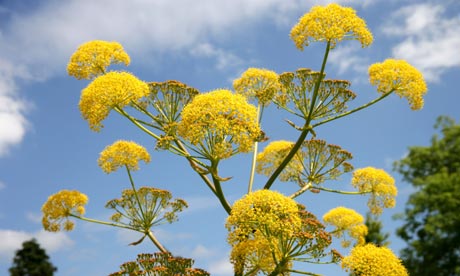


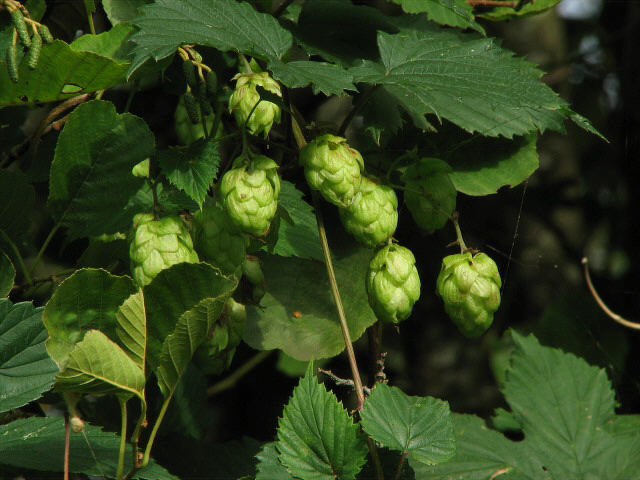




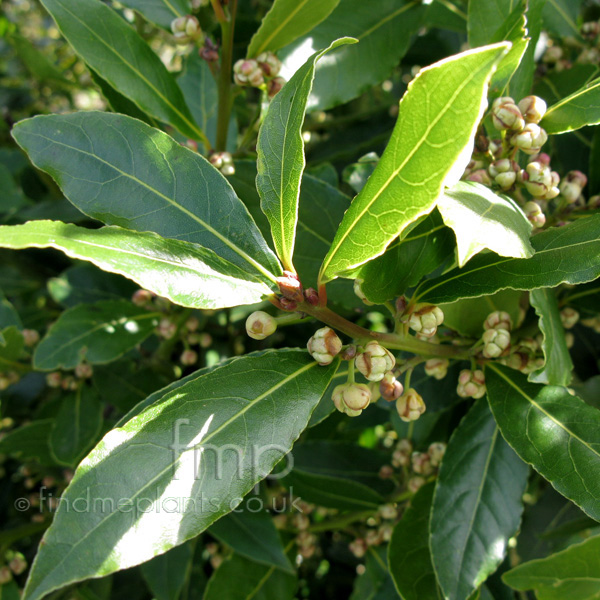


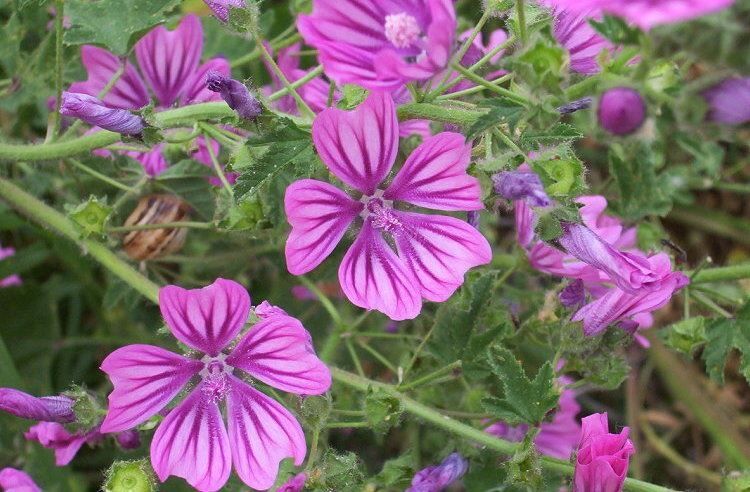


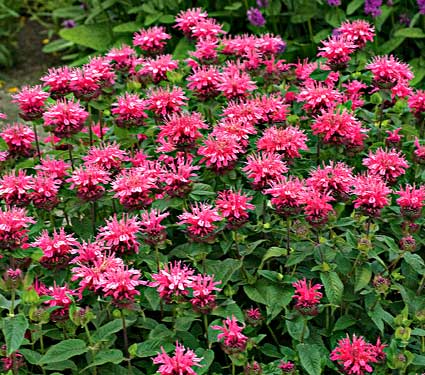
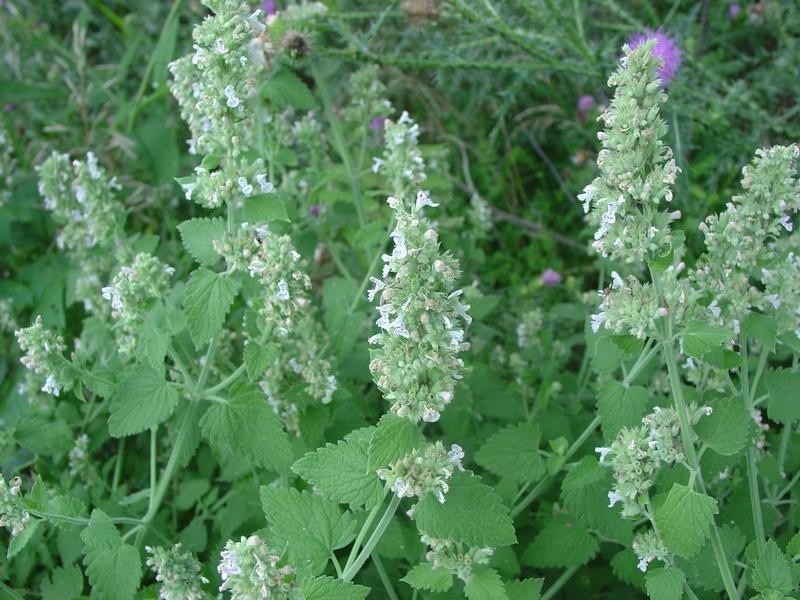




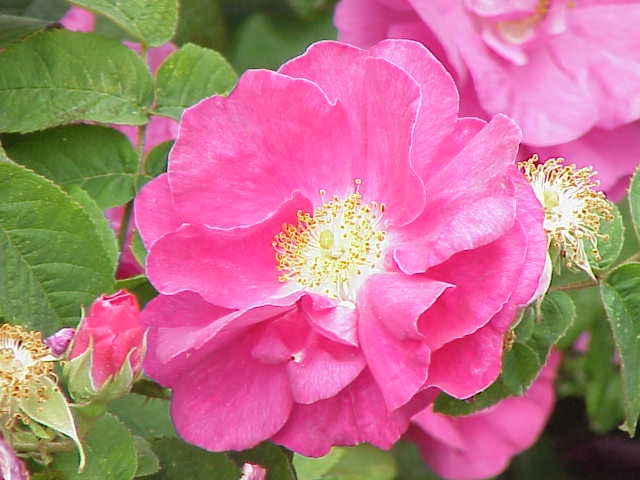
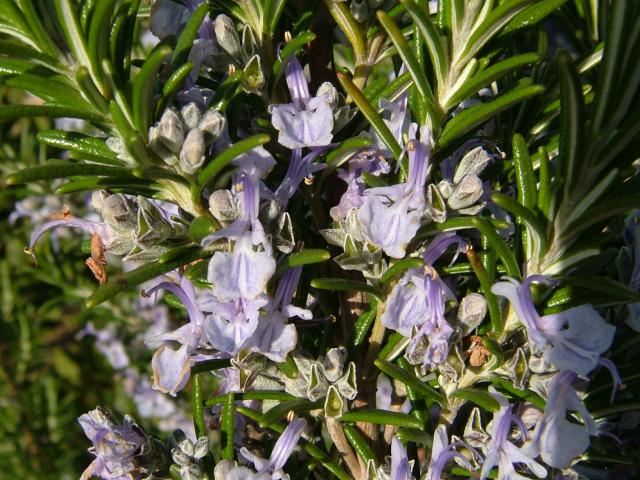


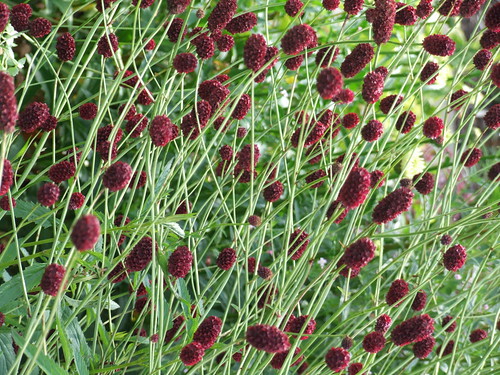

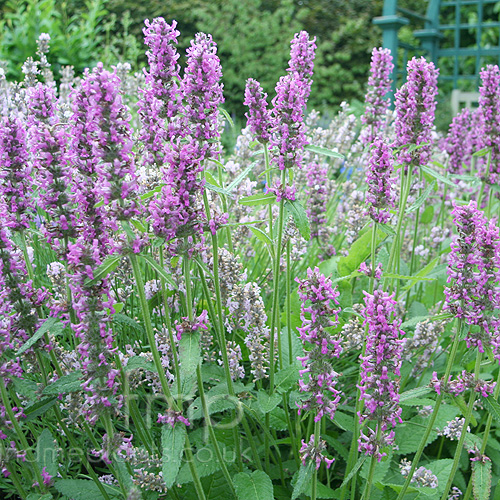










Wow these are amazing flowers and plants.. they are not only make our sorroundings beautiful but also gives a benificial treatments to people like Alcea rosea, Hollyhock...
ReplyDeleteOnline Plant Nursery